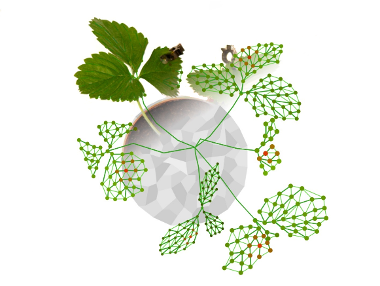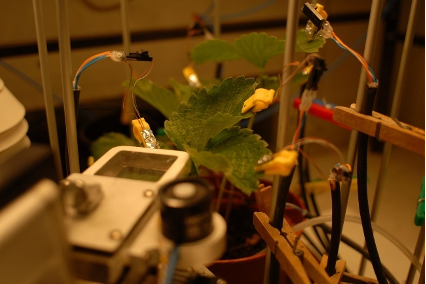Leveraging plant physiological dynamics using physical reservoir computing
- Rafal Tekreeti

- Sep 13, 2022
- 2 min read
Updated: Feb 7, 2023
By: Olivier Pieters, Tom De Swaef, Michiel Stock & Francis wyffels
We from UGent-imec IDLab-AIRO, ILVO-Plant and UGent-KERMIT recently published a first demonstration of physical reservoir computing with plants. Treating plants as computing entities helps generalize the interpretation of plant behaviour and provides essential context to physiological studies. This interdisciplinary research is the result of the expertise in robotics and unconventional computing (IDLab-AIRO), plant physiology (ILVO-Plant) and optimisation (KERMIT); and, provides a more holistic approach to phenotyping, promising to advance breeding and precision agriculture with this more integrated perspective on plant responses.

Reservoir computing is a generalized computing paradigm that enables one to compute with a wide range of substrates, from photonic integrated circuits to compliant robot bodies. We want to extend this towards plants, complex structured organisms that lack a central information processing organ like animals. To investigate the computational capabilities of plants in the context of reservoir computing, we collected detailed time series data of leaf thickness. We show that various plant-related processes can be assessed by measuring leaf thickness at various locations. This research is the first vital step towards embedding plants inside control loops such as those present in greenhouses. Hence, we want to enable faster detection of stress and suboptimal growing conditions.
While the system can be very does not require large amounts of data to operate in the final stage[MS1] , this was not the case in these exploration experiments. It is necessary to explore the number of required sensors and the timescale at which plant processes occur. As such, we collected over 2 million measurement values using an automated data logging system. These are subsequently processed using a ridge regression
model. While a single model is trained within half a minute, we need to evaluate thousands of sensor-value combinations and model variations (hyperparameter tuning, evaluating other models) to find good-performing systems. To that end, the VSC infrastructure enabled us to scale easily to hundreds of independent nodes and finish evaluations within hours instead of weeks.
The VSC infrastructure enabled us to scale easily to hundreds of independent nodes and finish evaluations within hours instead of weeks.
This research forms the basis in what we hope will be a paradigm shift in the plant community towards a more integrated view in plant responses.
Read the full publication on: Nature Portfolio
To kickstart the spread thereof and bridge the gap between different research fields, we are organising PlantComp workshop on the 10th and 11th of October 2022. There, we will bring together researchers in phenotyping, modelling and sensing to better exchange expertise in this highly interdisciplinary field.







